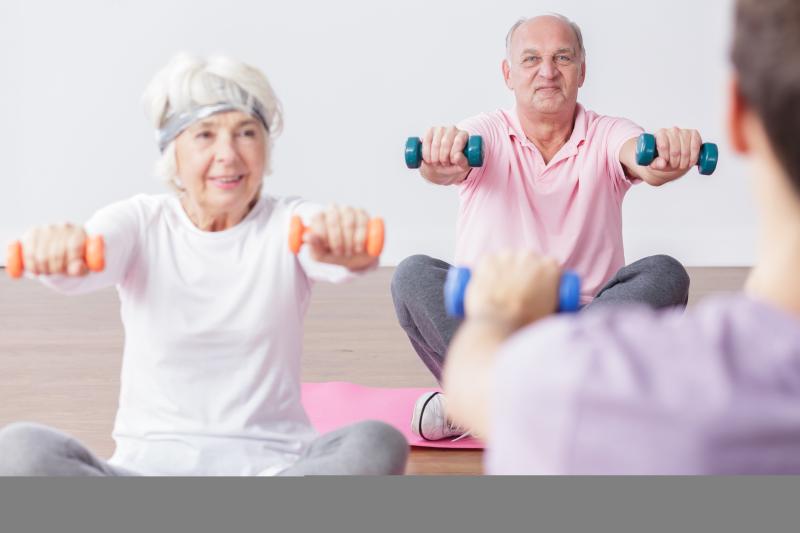
An aerobic physical fitness training in adults with moderate-to-severe subacute stroke is not better than relaxation intervention in terms of maximal walking speed and activities of daily living (ADL), a new study has shown. The risk of falls is also higher in participants undergoing physical fitness training.
“Compared with current guideline recommendations, these results do not appear to support the use of aerobic bodyweight supported fitness training in this stroke population,” the researchers said. [Stroke 2014;45:2532-2553]
At 3 months after stroke, aerobic physical fitness training failed to achieve a significantly higher mean change in maximal walking speed (adjusted treatment effect, 0.1 m/s, 95 percent CI, 0.0–0.2 m/s; p=0.23) or mean change in Barthel index score (0, –5 to 5, p=0.99) compared with relaxation sessions. [BMJ 2019;366:l5101]
The aerobic group also showed a higher rate of serious adverse events than the relaxation group (incidence rate ratio, 1.81, 0.97–3.36).
“Our trial provides evidence that an aerobic physical fitness training intervention with bodyweight support cannot be generally endorsed in adults after subacute stroke and should be administered with caution when applied early after moderate or severe stroke,” the researchers said.
“Despite these findings, aerobic physical fitness [training intervention] could still be an invaluable part of stroke rehabilitation—for example, in people with chronic stroke or mildly affected with subacute stroke,” they added.
These treatment effects on mobility outcomes are consistent with those reported in the latest Cochrane Collaboration meta-analysis of physical fitness trials after stroke and randomized trials of circuit class training interventions. [Cochrane Database of Systematic Reviews 2016;3:CD003316; BMJ 2012;344:e2672; Int J Stroke 2015;10:594-602]
The present trial, however, reported that neither the intention-to-treat analysis nor the per-protocol analysis indicated a significant between-group difference in maximal walking speed. This finding is in contrast with that of previous trials showing beneficial effects of fitness training on maximal walking speed. [Neurorehabil Neural Repair 2012;26:85-95; Stroke 2003;34:2173-2180; Clin Rehabil 2004;18:640-651]
“Interventions in these previous trials were compared with usual care only, however, and the reported improvements were in smaller cohorts comprising participants with late subacute or chronic stroke and less severe disability,” according to the researchers.
The current multicentre, randomized controlled, endpoint-blinded trial was conducted in seven inpatient rehabilitation sites in Germany from 2013 to 2017. Two hundred adults with subacute stroke (5–45 days after stroke) with a median National Institutes of Health stroke scale score of 8 (interquartile range, 5–12) were randomized 1:1 to aerobic physical fitness training (n=105) or relaxation sessions (n=95) in addition to usual care.
Participants received either aerobic, bodyweight supported, treadmill-based physical fitness training or relaxation intervention, each for 25 min, five times weekly for 4 weeks. Investigators and endpoint assessors were masked to treatment assignment.
“Based on our results, trials should investigate if longer intervention periods are necessary to capture major changes in ADL, assess the treatment effects of relaxation programmes compared with usual care, and recruit participants at fixed time points after stroke to reduce variance in outcome measures,” the researchers said. [Neurorehabil Neural Repair 2017;31:334-342; Int J Stroke 2017;12:444-450]
“Future trials might also evaluate whether the observed sex specific difference in change of maximal walking speed or the effects on endurance measures can be replicated,” they added.